Nestled in the heart of Buon Ma Thuot, Dak Lak Province, the World Coffee Museum stands as a testament to the rich tapestry of coffee culture woven throughout Vietnam's history. Officially inaugurated on November 23, 2018, by the Trung Nguyen Legend Group, this museum is not merely a collection of artifacts; it is an immersive experience that brings together the art, science, and sociocultural significance of coffee. Being the world's second-largest coffee producer, following Brazil, Vietnam's coffee industry is dynamic and ever-evolving. The museum serves a dual purpose: to educate visitors about the global history of coffee while simultaneously celebrating Vietnam's unique role within that narrative. From engaging exhibitions to interactive workshops, the World Coffee Museum aims to promote coffee not just as a beverage, but as a fundamental element that nurtures community, economy, and culture.
The World Coffee Museum holds immense importance as it meticulously blends educational value with cultural portrayal. It illuminates the historical, social, and economic impacts of coffee consumption while encouraging sustainable practices within the industry. Through a multitude of filtered experiences, visitors gain a comprehensive insight into the various coffee-making methods, regional specialties, and cultural practices associated with coffee consumption across different civilizations.
Cultural Heritage and Education: The museum is designed to be an interactive space that captivates its audience. Through virtual exhibitions and hands-on experiences, visitors are welcomed to engage with artifacts that reflect global coffee cultures. This mission aligns perfectly with its strategic goal of amplifying Vietnam's coffee heritage.
Tourism and Economic Development: This establishment plays a pivotal role in positioning Buon Ma Thuot as the "global coffee capital." In doing so, it brings approximately 5 million visitors annually, showcasing how coffee tourism can enrich the local economy. The subsequent flow of visitors bolsters various local businesses cultural enterprises, cafes, and artisan shops enthusiastically responding to the increased foot traffic.
Fostering Coffee Culture: Vietnamese coffee is renowned for its unique preparation methods, including phin brewing and the delightful use of condensed milk in traditional beverages like cà phê sữa đá. This cultural aspect not only includes the brewing process but also encapsulates the social rituals surrounding coffee drinking, enriching Vietnam's identity on a global scale.
Global Coffee Advocacy: As a platform for advocacy, the museum prioritizes sustainability in coffee production. It educates visitors on ethical sourcing while underscoring the importance of supporting local farmers and communities. Visitors leave with a refined appreciation for the labor that goes into their cup of coffee, reflecting the diverse practices behind each brew.
The multifaceted approach of the World Coffee Museum towards cultural dissemination, economic enhancement, and ethical advocacy accentuates its pivotal role in both local and global contexts.
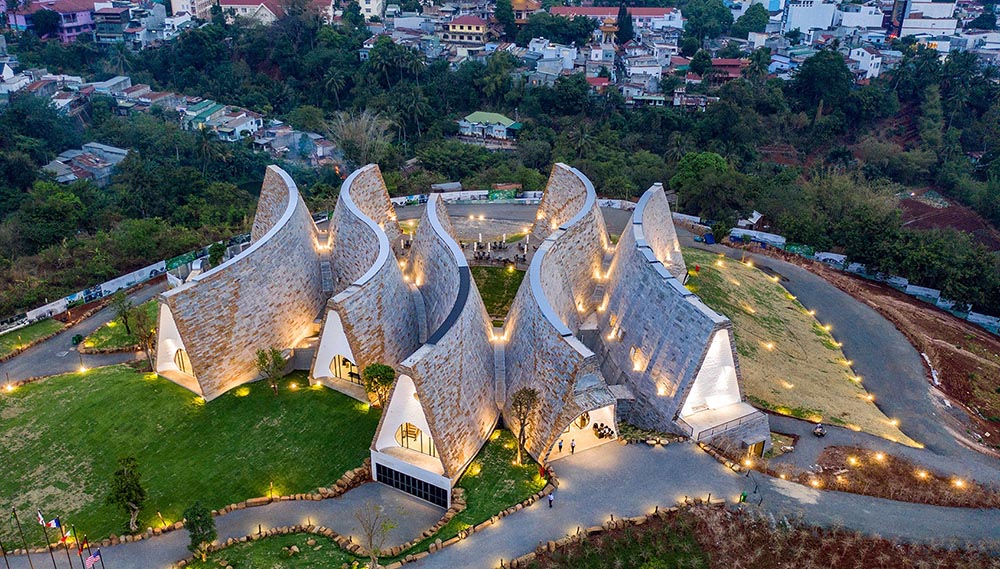
The cultural significance of coffee in Vietnam is deeply rooted in its history and social practices. Introduced during the French colonial era in 1857, coffee has evolved from an import to an integral part of Vietnamese life a cultural cornerstone that reflects the dreams and aspirations of a nation.
Historical Context: The introduction of coffee to Vietnam marked the beginning of a profound relationship that continues to shape its economic landscape today. The evolution from colonial cultivation to modern-day practices illustrates a journey defined by perseverance and adaptability.
Economic Importance: Beyond its history, coffee production represents a significant economic pillar for Vietnam. With a vast majority of households dependent on this crop, coffee embodies stability, resilience, and livelihood. As global demand continues to rise, Vietnam's reputation as a robust producer boosts both local farmers' welfare and national pride.
Social Interactions: The communal aspect of coffee drinking cannot be overstated. In Vietnam, coffee shops are social hubs where friends gather to share stories, businesspeople close deals, and families bond. This relationship with coffee has resulted in uniquely Vietnamese practices, such as the renowned cà phê trứng or egg coffee, which further defines Vietnam's diverse coffee culture.
Symbol of Resilience and Identity: Ultimately, coffee symbolizes not just a beverage, but Vietnam's journey from colonial exploitation to an empowering narrative that reinforces national identity. This rich tapestry of history encapsulates stories of struggles and triumphs, weaving coffee into the very fabric of its cultural existence.
The cultural significance that coffee has in Vietnam thus extends far beyond its taste, resonating through social interaction, economic resilience, and national pride.
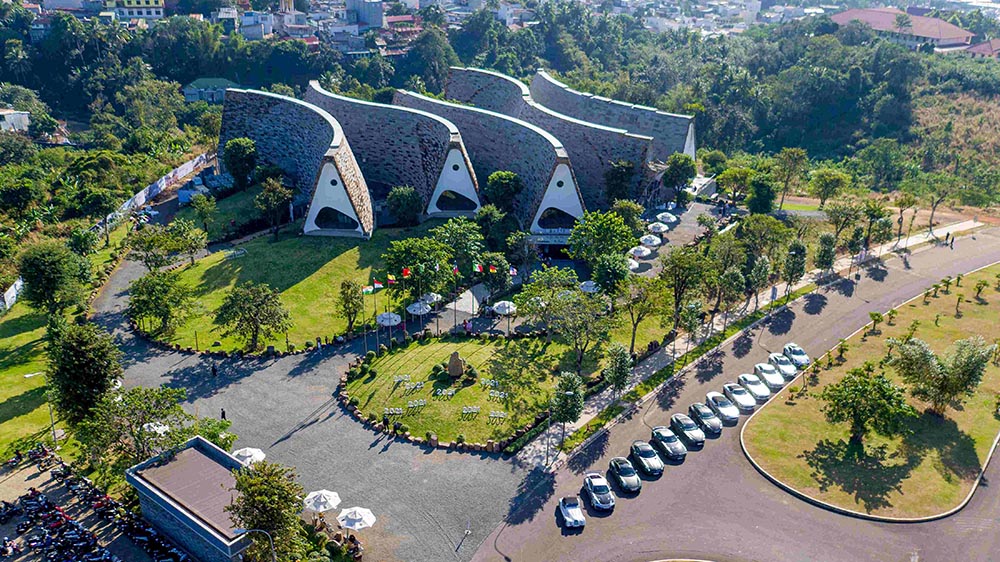
The World Coffee Museum has significantly enhanced the local economy and tourism sector in Dak Lak, cementing its role as a vital cultural destination. With its unique architectural design inspired by traditional Ê Đê long houses and its vast collection of over 10,000 coffee-related artifacts, the museum attracts tourists and fosters local development.
Visitor Numbers: Since its opening, the museum has attracted approximately 5 million visitors from over 23 countries. This influx has resulted in an impressive growth rate of 473% in Dak Lak's tourism sector as of 2022, further solidifying the area's position on the global tourism map.
Cultural Events: The museum organizes a range of cultural events that enrich the community's cultural fabric. Over 300 community-related activities have taken place within just four years, demonstrating the museum's commitment to local development and encouraging tourism-related growth.
Economic Impact: The direct correlation between increased visitors and economic prosperity is clear. The rise in tourists has fostered job creation, leading to increased business opportunities for cafes, restaurants, and local artisans in the vicinity of the museum.
Global Recognition: The uniqueness of the museum's offerings has attracted international media attention and accolades, such as being recognized as a living museum. Such recognition further promotes Dak Lak as a coveted destination for coffee enthusiasts from around the globe.
These contributions underscore the museum's pivotal role in stimulating local economic growth and enhancing the visibility of Dak Lak as a premier coffee tourism destination.
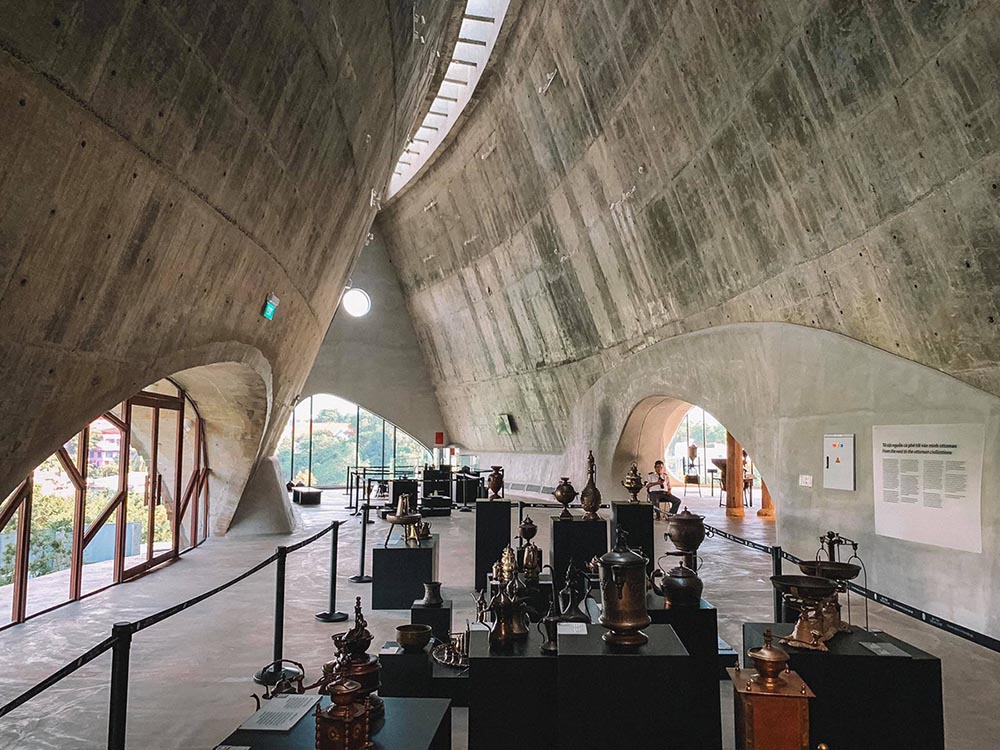
The World Coffee Museum boasts a diverse array of exhibits and collections reflecting the shared history and cultural significance of coffee across different civilizations. This showcases not merely the artifacts but also the stories behind them, enabling visitors to connect with coffee on a deeper level.
Coffee Cultures: Among the exhibitions, three primary themes stand out: Ottoman, Roman, and Zen (Thiền) coffee civilizations. Each exhibit contains artifacts and historical narratives illuminating the developments in coffee culture over the centuries.
Historical Artifacts: The museum houses numerous historical items, including antiquated coffee processing tools and machines dating back to the 19th century. These artifacts serve to narrate coffee's historical journey and its evolution through time.
Interactive Experiences: Committed to being a 'living museum,' the World Coffee Museum aims to engage all senses through its exhibitions. This dynamic approach encourages deeper interaction, allowing visitors to fully grasp the multifaceted culture of coffee.
Cultural Events: Alongside traditional exhibits, the museum embraces modernity through live performances, thematic exhibitions, and festivals that reenact historical and cultural moments, creating an immersive educational environment.
Through its collection and dynamic programming, the World Coffee Museum effectively narrates the rich heritage of coffee, emphasizing its importance to local culture and economy.
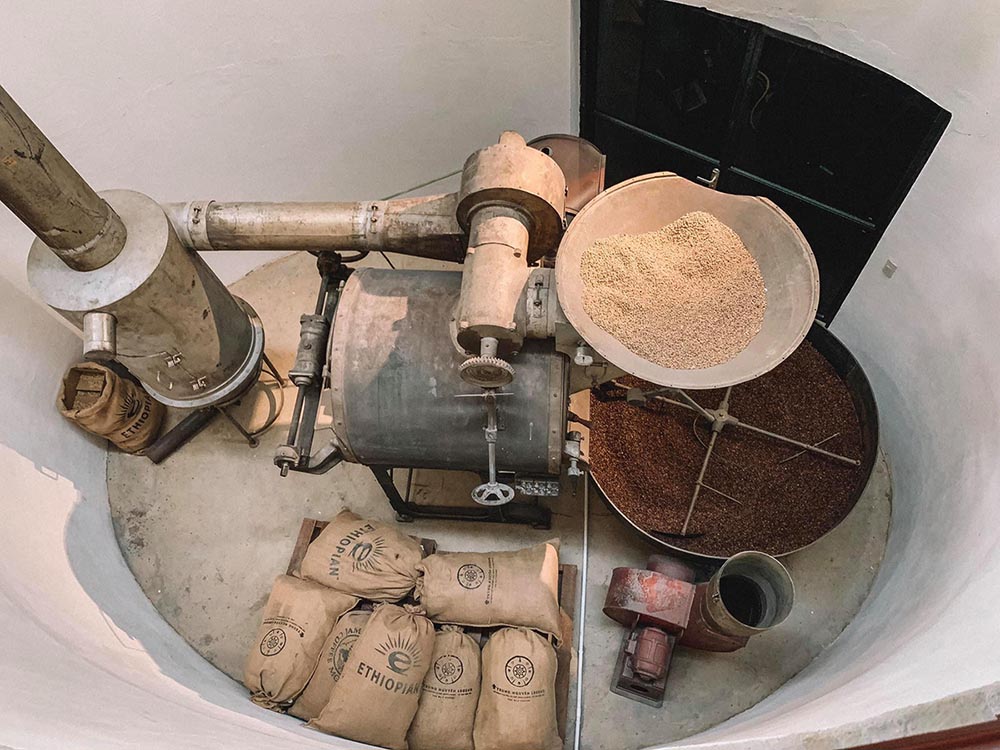
While the museum presents a wide range of coffee artifacts, particular emphasis is placed on the dynamic nature of coffee's cultural journey. From historical processing tools to contemporary brewing methods, the range of artifacts offers a comprehensive view of how coffee shapes lives across various contexts.
Cultural Artifacts: A significant collection of items includes manual coffee grinders, processing equipment, and traditional brewing pots that reveal the evolution of coffee preparation methods across civilizations.
Brewing Techniques: The artifacts showcased are not only for display but also serve to demonstrate traditional brewing techniques like Turkish coffee preparation, Italian espresso making, and Vietnamese drip coffee.
Artistic Representation: Many of the artifacts reflect artistic craftsmanship, showing how coffee transcends mere consumption to become a cultural expression interwoven with local traditions.
Community Engagement: Visitors are encouraged to engage with these artifacts through interactive experiences, workshops, and public demonstrations that highlight the significance of these tools in the brewing narrative.
The collection at the World Coffee Museum underscores coffee's transformative nature across various cultures and its ability to bring communities together through shared experiences.
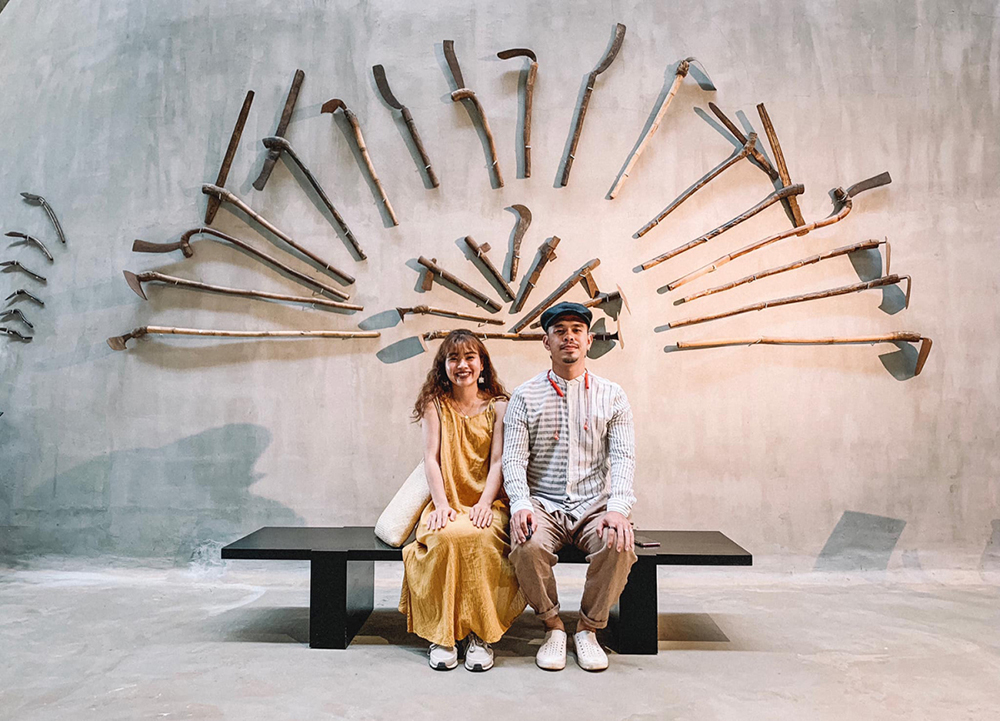
The Ottoman Coffee Civilization exhibits offer a profound exploration into the Islamic world's historical relationship with coffee. This collection elucidates coffee's evolution from a modest beverage to a symbol of hospitality, community, and social interaction.
Artisan Artifacts: The displayed artifacts, primarily from the late 18th to early 20th centuries, such as ornate coffee kettles (ıhlamur), beautifully designed samovars, and intricate bronze trays, embody the cultural and artistic values associated with coffee.
Cultural Practices: The Ottoman coffee rituals showcased highlight the importance of coffee within social gatherings and ceremonies, teaching visitors about the customs surrounding coffee consumption in Ottoman society.
Historical Context: The exhibits provide insights into how coffee culture evolved through trade routes, shaping social behaviors, intellectual discussions, and even influencing art and literature.
Visitor Engagement: Interactive components are integrated into the exhibition, allowing visitors to experience traditional Ottoman coffee-making techniques, thereby enhancing their understanding of the cultural significance.
This engagement with history serves to foster an appreciation for the collective narratives surrounding coffee throughout the Ottoman Empire.
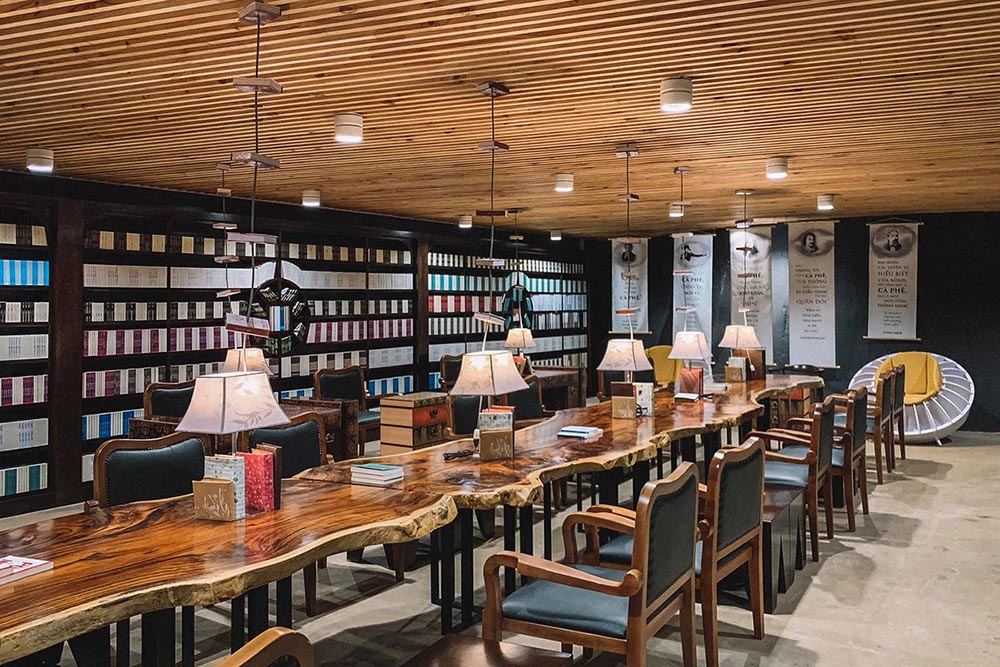
The Roman Coffee Civilization exhibit at the World Coffee Museum emphasizes the historical context of coffee's introduction into European society during the 16th century, presenting artifacts that reflect social, political, and economic changes of that era.
Artifact Collection: Visitors can explore items like coffee brewing pots, cash registers from early coffeehouses, and scales that capture the evolution of commercial coffee trade in Rome.
Social Significance: Central to the narrative is the establishment of coffeehouses as social centers that facilitated discussions on philosophy and politics, contributing to movements such as the Enlightenment.
Civic Spaces: The exhibit also explores the concepts of Homo Coffea and Societas Coffea, showcasing how coffee consumption fostered public spaces where civic life flourished during the era of early capitalism.
Interactive Learning: The incorporation of interactive displays encourages visitors to grasp the broader implications of coffee culture beyond mere consumption, understanding its role in societal advancement.
Through this lens, the exhibit not only highlights the artistic aspects of coffee culture but also its historical essence.
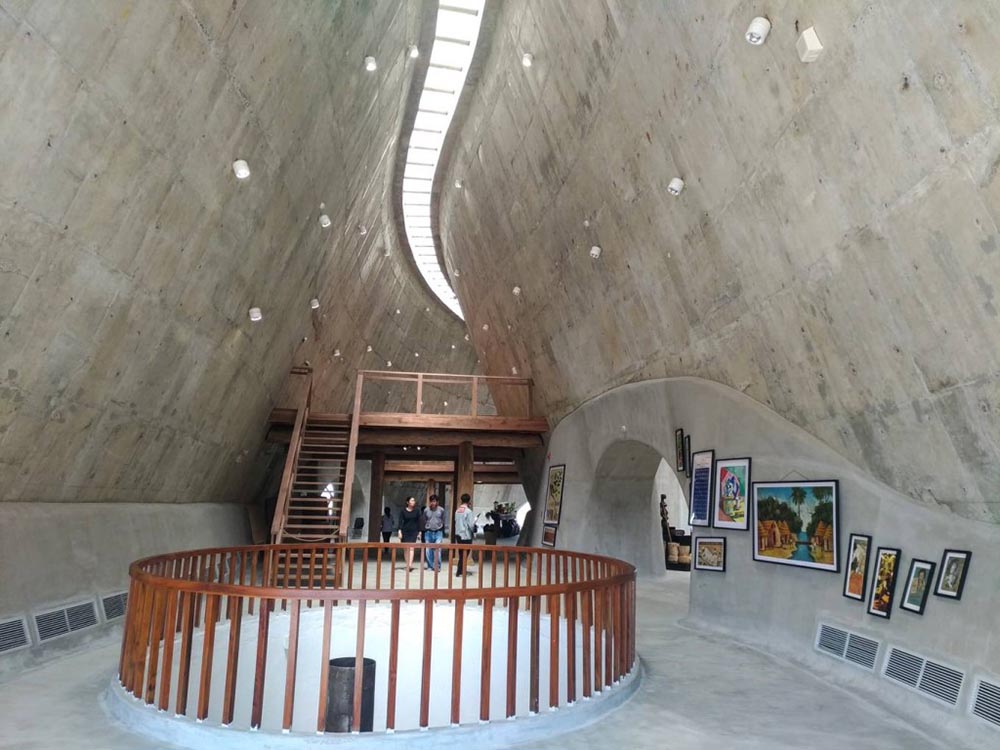
The Thiền (Zen) Coffee Civilization exhibit emphasizes the intersection of mindfulness, spirituality, and coffee culture, reflecting on how Zen principles influence the coffee experience.
Philosophical Underpinnings: This exhibit invites visitors to engage with coffee beyond its sensory experience, delving into contemplative practices associated with coffee consumption.
Cultural Interpretations: The artifacts and narratives presented illustrate how coffee has been integrated into Zen meditation practices, emphasizing tranquility and focus.
Community Engagement: Workshops around this exhibit encourage hands-on learning experiences, allowing visitors to explore the themes of mindfulness through coffee preparation methods.
Inspiring Spaces: The layout and design of the exhibit are intentionally created to foster tranquility, aiming to provide a reflective environment that resonates with Zen principles.
This thematic exploration allows for a unique integration of cultural practice, spirituality, and history.
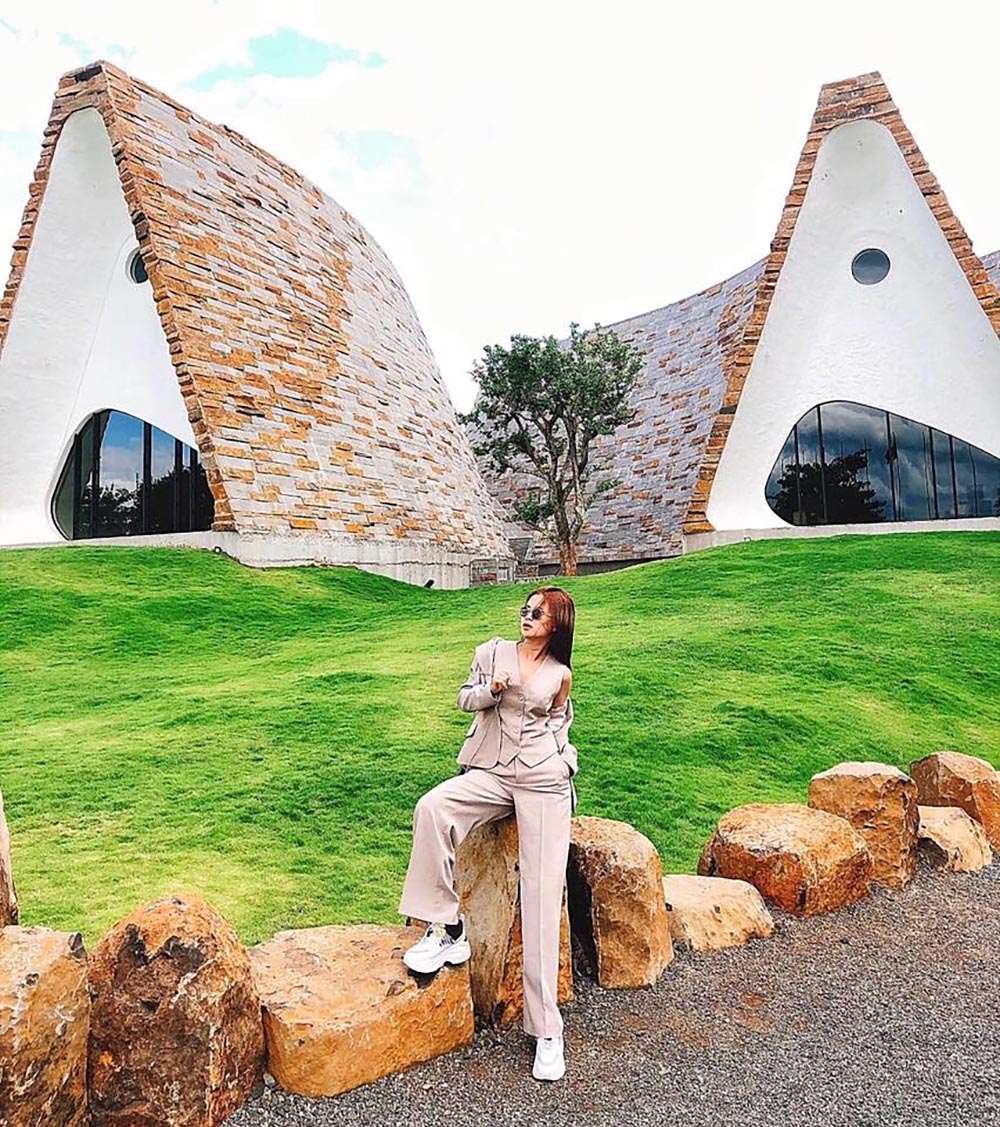
The educational programs at the World Coffee Museum are designed to provide immersive learning experiences that connect history, culture, and coffee. These initiatives complement the museum's exhibits, offering visitors unique insights into the significance of coffee in various contexts.
Special Exhibitions: The museum regularly hosts special exhibitions that focus on specific themes or subjects related to coffee, encouraging visitors to broaden their understanding of its history and cultural relevance.
Workshops: Engaging workshops are organized, focusing on topics such as coffee brewing techniques, tasting sessions, and discussions about the origins and varieties of coffee. These practical experiences connect participants with the sensory dimensions of coffee culture.
Community Engagement: The museum emphasizes community involvement through various programs designed to engage local residents and visitors alike with the coffee culture. Events may include live performances, presentations, and cultural festivals.
Interactive Learning: Through the “living museum” approach, attendees can engage with coffee beyond theory, allowing for hands-on experiences that promote deeper appreciation and understanding.
This blend of educational offerings emphasizes the museum's commitment to serve as a platform for cultural exchange and understanding.
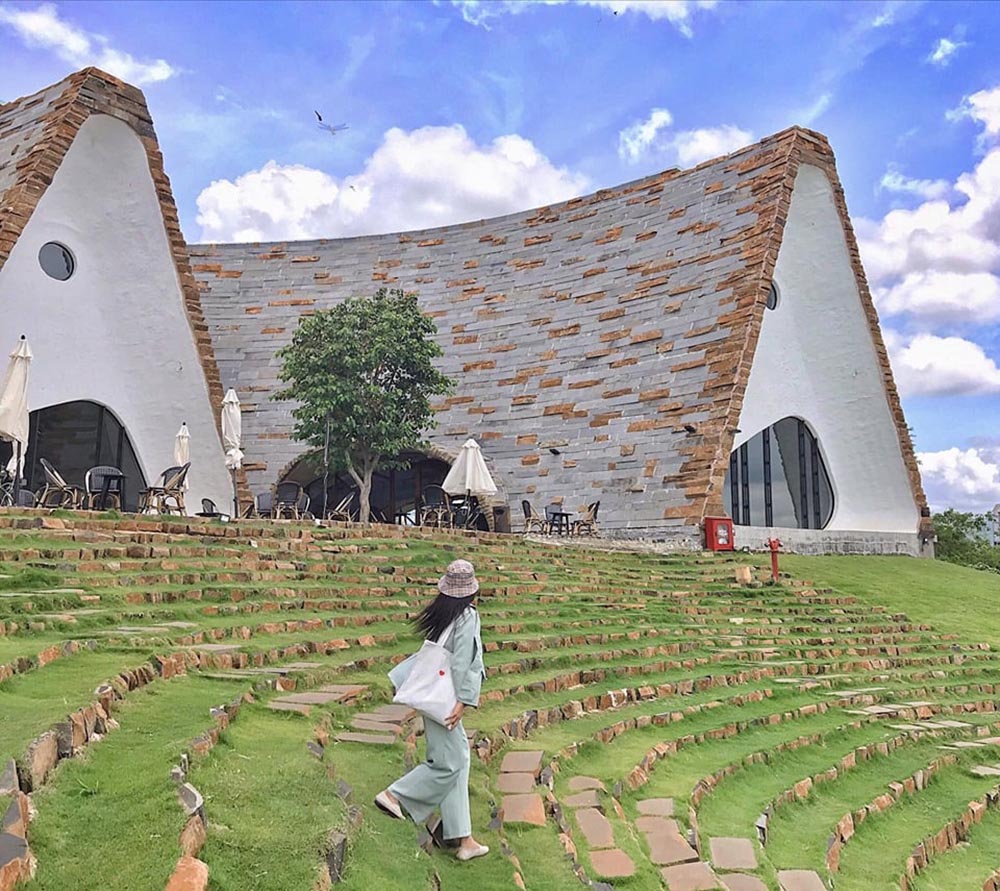
Special exhibitions at the World Coffee Museum provide insightful narratives about the evolution of coffee production and its cultural significance. Some notable themes have included:
Nearly Two Centuries of Vietnamese Coffee Conquering the World: This exhibition traces the journey of Vietnamese coffee over the last two hundred years, illustrating its impact on both local culture and global markets.
Buon Ma Thuot - Land of the Best Robusta Coffee Beans in the World: Celebrating the region's rich heritage of coffee cultivation, this exhibition underscores Buon Ma Thuot's pivotal role as a Robusta coffee-producing hub.
Trinh Cong Son - Inspiration from Zen and Coffee: Honoring the legendary musician, this exhibit explores how his life and art intersect with coffee culture, weaving together storytelling and sensory experience.
Interactive Educational Programs: These programs encompass workshops and experiential learning opportunities that highlight the rich tapestry of coffee traditions, helping visitors connect emotionally and intellectually with the beverage.
Through these special exhibitions, the museum engages both locals and international visitors, fostering a deeper understanding of coffee's global significance.
The World Coffee Museum prioritizes interactive experiences and workshops, enhancing visitor engagement with coffee culture through a hands-on approach.
Engaging Workshops: Workshops focusing on brewing techniques and sensory evaluations allow visitors to explore their personal preferences while learning about coffee's diverse flavor profiles.
Sensory Experiences: Visitors are encouraged to engage their senses sight, touch, taste, smell, and sound through various interactive exhibits, enabling them to fully immerse in coffee's rich aesthetics.
Cultural Events: Regularly scheduled events, such as cultural festivals, nourish community relationships. They celebrate local coffee traditions and connect coffee lovers from different backgrounds.
Visitor Contributions: By fostering a collaborative environment where ideas and stories about coffee culture are shared, the museum enhances the communal aspect of coffee consumption.
This focus on participatory learning solidifies the museum's vision of being a dynamic space that evolves with the community it serves.
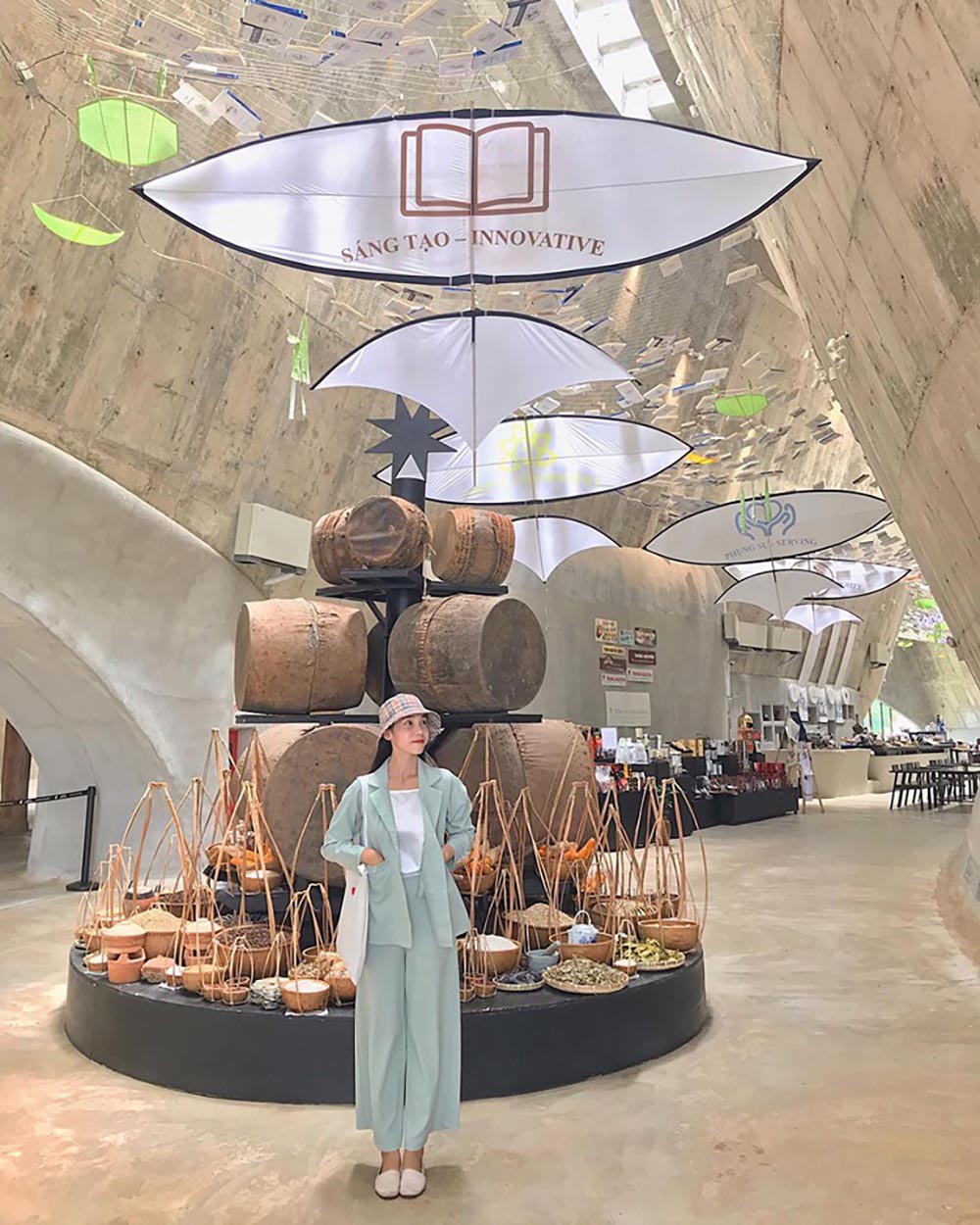
The World Coffee Museum serves as an essential destination for both locals and international tourists, offering a vast array of resources and information to enhance visitor experiences.
Location and Accessibility: Conveniently located in Buon Ma Thuot City, the museum is accessible via domestic flights and local transportation methods. Visitors can easily reach the museum from the city center.
Opening Hours: The museum operates daily from 8:00 AM to 5:00 PM, providing ample opportunities for exploration and engagement with exhibitions.
Admission Fees: Admission prices cater to a broad audience, allowing access for adults at 150,000 VND and children at 40,000 VND. Special experience fees also apply for unique events like the Coffee Zen show.
Visitor Services: The museum is equipped with amenities, including guided tours and accessible facilities, ensuring an informative and comfortable visit for everyone.
This wealth of visitor information underscores the museum's commitment to fostering a welcoming and enriching environment for all.
The World Coffee Museum is strategically located at Nguyen Dinh Chieu Street, Tan Loi Ward, Buon Ma Thuot City, Dak Lak Province, Vietnam. Known as an emblematic attraction in one of Vietnam's most significant coffee regions, it provides easy access to visitors.
Transport Options: Visitors can travel to the museum via domestic flights to Buon Ma Thuot City. Following their arrival, the museum is conveniently located approximately 4.2 kilometers away from the city center.
Local Transportation: Getting to the museum is straightforward with transportation options such as taxis and motorbike rentals. Taxi fares from the city center typically range from 50,000 to 70,000 VND, ensuring ease of access.
Visitor Amenities: Well-signposted pathways and accessible facilities improve visitor experiences, ensuring that everyone can navigate the museum comfortably, regardless of individual needs.
Overall, the museum's location and accessibility reinforce its role as a major cultural hub within Vietnam's coffee landscape.
The World Coffee Museum operates with specific hours and transparent admission fees, making it accessible for countless visitors.
Operating Hours: The museum welcomes visitors daily from 8:00 AM to 5:00 PM. This facilitates various visitors, whether they are traveling for business, pleasure, or education.
Admission Prices:
These options ensure that both casual tourists and coffee enthusiasts can find engaging opportunities at the museum.
This accessibility fosters the idea that coffee culture belongs to everyone, inviting all to explore and appreciate its depths.
The World Coffee Museum is equipped with several facilities and services aimed at enhancing the overall visitor experience, catering to various needs.
Interactive Exhibition Areas: The museum serves as a “living museum,” with spaces designed for dynamic interaction. Visitors can touch, smell, and even taste coffee in specially designated areas.
Educational Resources: The "Library of Light" serves as a cornerstone for those seeking knowledge about coffee. Housing over 100 foundational books on topics like science and philosophy, this resource enriches the educational experience.
Unique Architectural Features: The museum’s design reflects a commitment to cultural heritage, with considerations such as curved blocks and sustainable materials that promote harmony with the natural landscape.
Visitor Services: The museum provides guided tours, information desks, and accessible facilities. Ensuring a positive visitor experience fosters satisfaction and community engagement.
This holistic approach to facilities and visitor services enhances the overall experience, ensuring visitors leave with a sense of connection to coffee and its significance.
The World Coffee Museum significantly impacts coffee culture not only within Vietnam but on a global scale. Through a commitment to education, cultural advocacy, and community engagement, the museum fosters a heightened awareness of coffee's historical, economic, and social significance.
Promotion of Vietnamese Coffee on Global Stage: The museum actively participates in initiatives that showcase Vietnamese coffee, enhancing its recognition worldwide as a premium product. Hosting exhibitions and events that highlight the region's unique coffee-growing techniques contributes to this goal.
Vision for Dak Lak as the Coffee Capital of the World: The overarching ambition to position Dak Lak as the "Coffee Capital of the World" informs various strategies pursued by the museum and local government. These initiatives aim to create a lasting legacy for Vietnamese coffee and its inability to compete for global recognition.
Educational Partnerships: Collaborative efforts with educational institutions reinforce the importance of coffee culture, enhancing visitors’ understanding of production methods and cultural implications while contributing to local academia.
Community Involvement: By organizing and encouraging public events, the museum effectively contributes to the community's coffee dialogue, fostering an appreciation for local agricultural heritage and sustainability.
Through these efforts, the museum solidifies its role as a transformative entity in Vietnam's coffee industry.
As a representative of Vietnamese coffee culture, the World Coffee Museum plays a crucial role in showcasing the unique offerings of the region on a global scale. By emphasizing the richness of Vietnamese coffee and the dedication behind its production, the museum serves as a bridge between local culture and international appreciation.
Exhibit Importance: The museum’s artifacts and exhibitions highlight the various processes involved in cultivating and producing Vietnamese coffee, from cultivation on mountainous terrains to traditional brewing methods. This approach emphasizes the unique qualities characteristic of Vietnamese coffee.
Cultural Exchange Events: Through hosting coffee-related festivals and events, the museum opens venues for cultural exchange, where local traditions are presented to a broader audience. These interactions encourage visitors from different countries to appreciate and adopt Vietnamese coffee culture.
Media Coverage: The museum has garnered attention from international media, such as the Discovery Channel's documentary showcasing Dak Lak's coffee history, which underscores the efforts made to elevate Vietnamese coffee's global profile.
Marketing Initiatives: Collaborating with local coffee producers and businesses, the museum spearheads marketing campaigns aimed at enhancing the visibility and desirability of Vietnamese coffee on the world stage.
In thriving to position Vietnamese coffee as a global commodity, the museum effectively lifts community voices, stories, and flavors into the international arena.
The ambition for Dak Lak to emerge as the "Coffee Capital of the World" is a driving force behind the establishment and activities of the World Coffee Museum. This vision encompasses a multifaceted approach, integrating cultural heritage, economic growth, and social responsibility.
Infrastructure Development: Continuous improvements are made to the museum and surrounding areas to support increased tourism, encouraging local businesses and enhancing the visitor experience. Investments into infrastructural growth set the foundation for a global coffee hub.
Cultural Celebrations: Festivals such as the Buon Ma Thuot Coffee Festival bring together coffee growers, producers, and enthusiasts, showcasing the region's culture and unique offerings while attracting visitors from all corners of the globe.
Collaboration with Stakeholders: By working alongside the government, local businesses, and educational institutions, the museum establishes itself as a centerpiece of the coffee culture narrative, fostering growth and development within the region.
Sustainability Practices: Emphasizing sustainable practices within coffee production and tourism initiatives is central to the vision for Dak Lak. Promoting responsible consumption and ethical sourcing strengthens the bond between the community and its land.
As Dak Lak continues to strive toward global recognition, the efforts and initiatives of the World Coffee Museum play a monumental role in shaping its future prospects.
What are the opening hours of the World Coffee Museum?
How much is admission to the World Coffee Museum?
How can I get to the World Coffee Museum from Buon Ma Thuot City?
What kind of exhibitions can visitors expect?
Are there any workshops available at the museum?
Can visitors participate in special events at the museum?
In conclusion, the World Coffee Museum is not just a repository of artifacts but a vibrant center that reflects the dynamic relationship between coffee and culture in Vietnam and beyond. By merging education with experiential learning, it embodies a commitment to promoting not just Vietnam's unique coffee heritage but also the global appreciation of this beloved beverage. From its impactful exhibitions to its interactive programs, the museum is a microcosm of coffee's power to connect people, inspire communities, and shape cultural identities worldwide. The vision for Dak Lak as the "Coffee Capital of the World" is realized through sustained efforts in advocacy, education, and community engagement, enriching both the local and global coffee narrative.